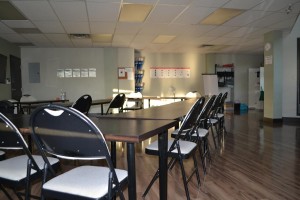CPR training courses used to be taken primarily by people who work or were studying healthcare. But as the awareness for a need to be prepared for emergencies spread all over the country, there are more and more laymen taking CPR training courses in Basic Life Support. High risk occupations typically require a number of employees to be trained in basic CPR as well, not just healthcare providers and professionals.
We give certification to all trainees who are able to complete their enrolled training program and pass the certification exam, composed of a skills test and written test. Certificates are valid for 2 years before they have to be renewed through a re-certification class. Expired certificates are not valid for renewal; the rescuer has to take the training program again.
Basic Life Support Training

Our BLS training programs teach trainees about the 2010 Basic Life Support guidelines from the American Heart Association. The guidelines were first created as a step-by-step process to guide rescuers in giving CPR. The guidelines focus on the Chain of Survival, with five links or steps to follow.
- Recognition of cardiac arrest
- Giving chest compressions immediately
- Defibrillation with an AED
- Advanced Life Support
- Post-cardiac arrest care
In a BLS training program, the lessons are focused on the first three links of the chain while ALS covers all five. BLS programs are generally very short, taking a single-four hour session to cover the entire curriculum which is based mainly on skills rather than in-depth knowledge about CPR. However, students are still taught about the most common causes of cardiac arrest, how to recognize it, and of course, how to manage it in an emergency situation.
The curriculum
We have three Basic Life Support programs that teach trainees how to give CPR alone or with a partner – one and two person rescue. Students are trained how to use an automated external defibrillator (AED), a machine that gives electrical shock to try and restore spontaneous beating of the heart. First aid is also part of all three programs.
The AHA’s concept of Basic Life Support is a guide used to help stabilize a victim of cardiac arrest outside of a controlled (medical/clinical) area. Trained rescuers aren’t necessarily healthcare providers either, they can be laypeople who don’t work in healthcare or are not studying it. The guide covers how to adequately give chest compressions, rescue breaths, and defibrillation to an unconscious and unresponsive victim.
- Heartsaver CPR and AED program – This basic program has two types, one for the general public and one for healthcare providers (Heartsaver C). It teaches trainees how to give one-person CPR rescue, first aid, and AED. No re-certification is available for these programs. [Program length: 4 hours (public); 4.5 hours (HCPs)]
- Basic Life Support for HCPs – This HCP program teaches one and two-person CPR rescue and the latest BLS guidelines (2010 version). Basic first aid and AED training is still included in this BLS program. [Program length: 4.5 hours, re-certification: 4 hours]